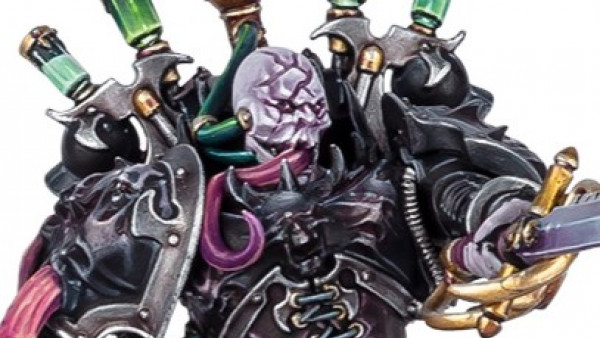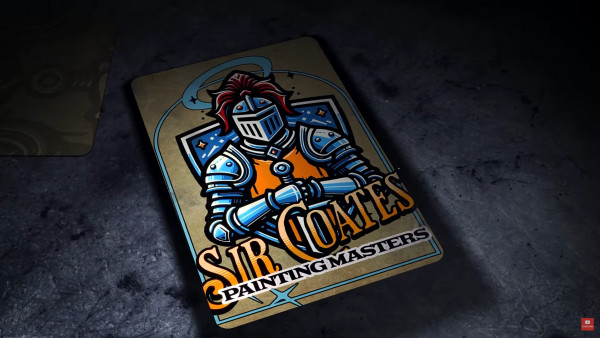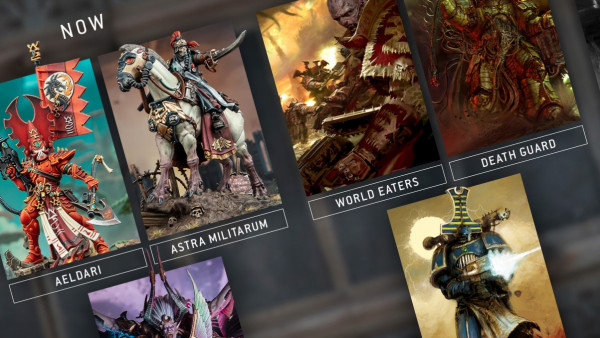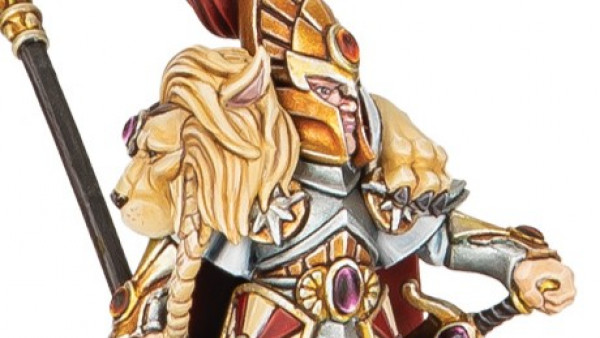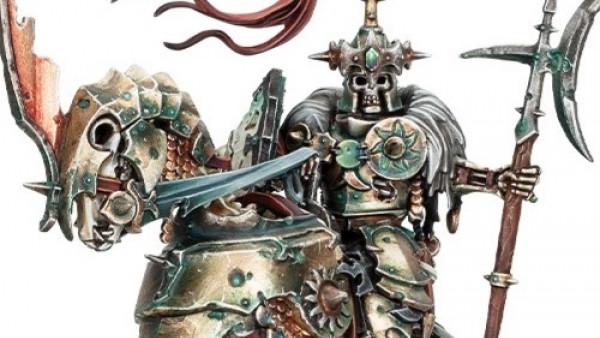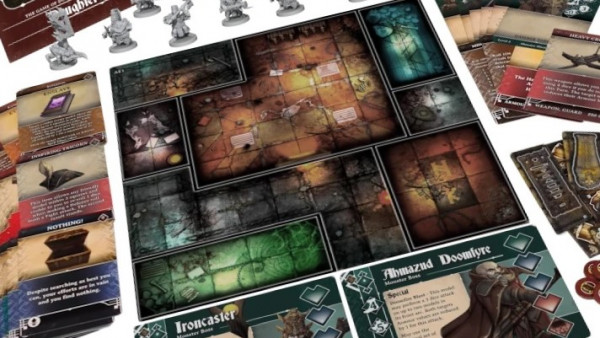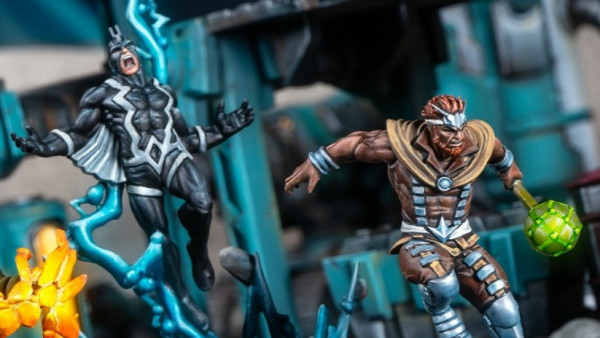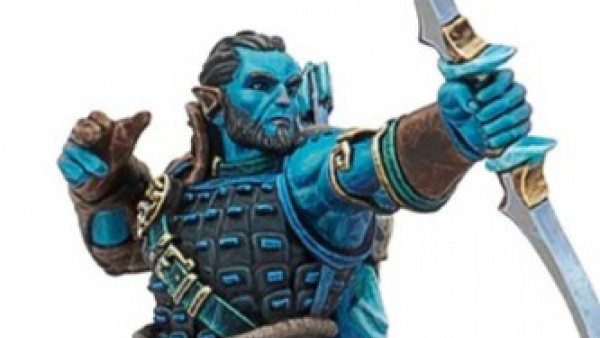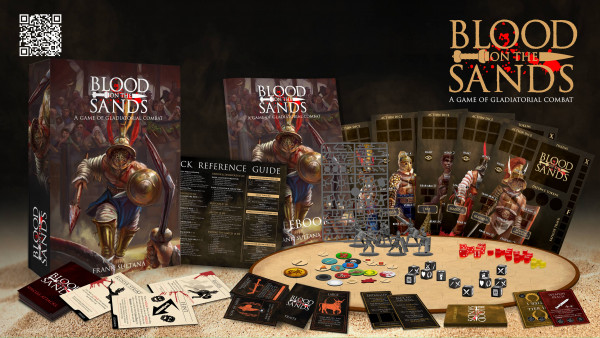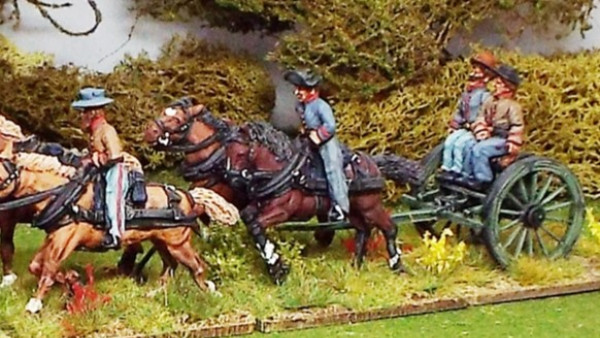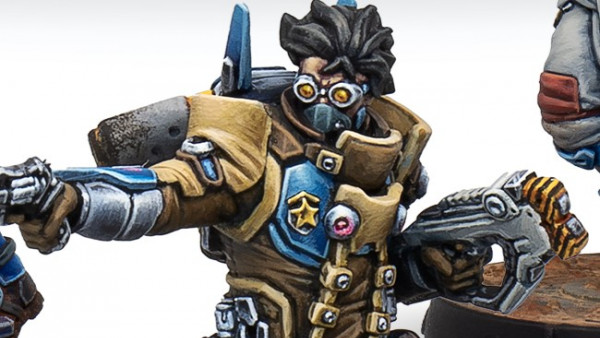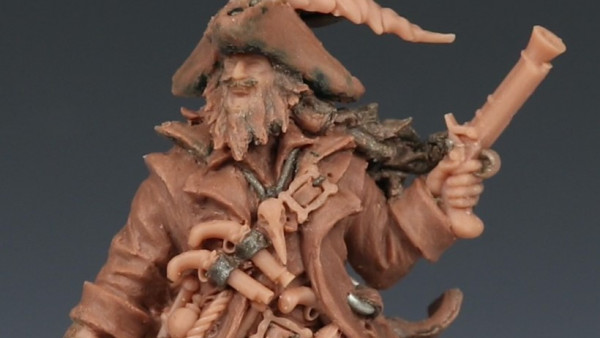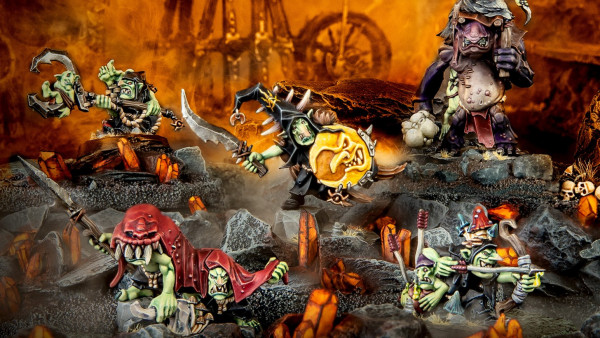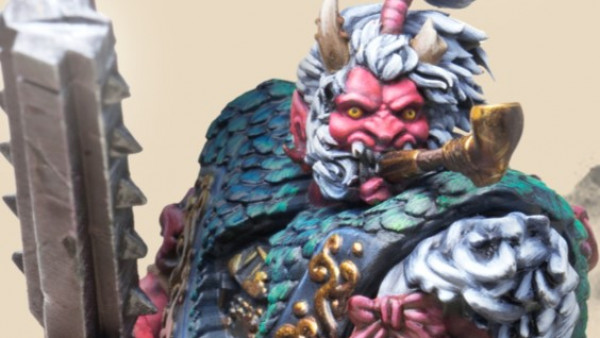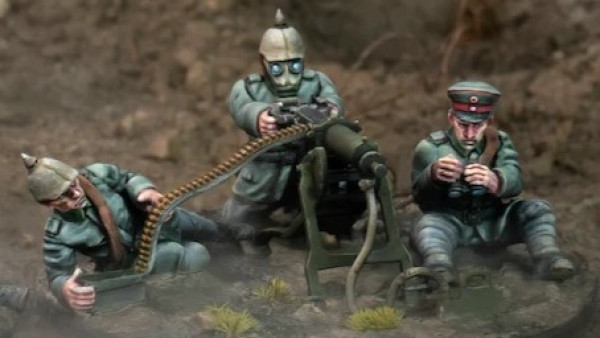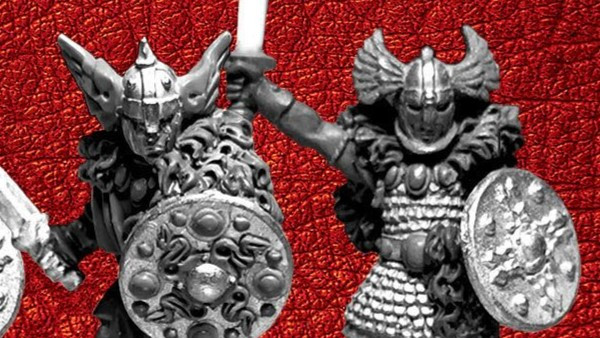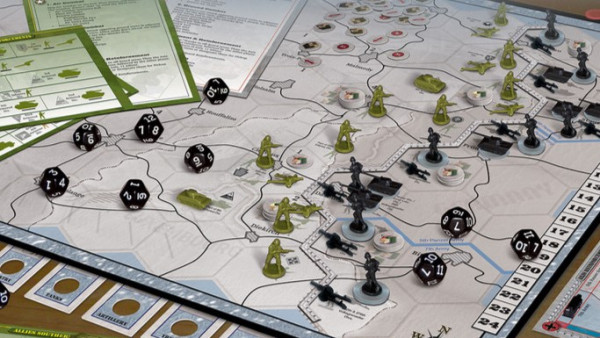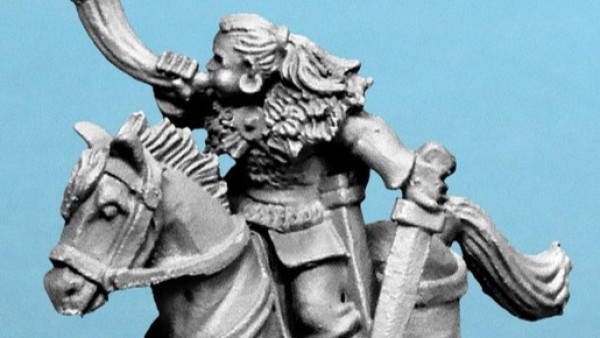Home › Forums › News, Rumours & General Discussion › Open gaming mini license
This topic contains 69 replies, has 14 voices, and was last updated by ![]() holly 1 year, 6 months ago.
holly 1 year, 6 months ago.
-
AuthorPosts
-
December 30, 2020 at 10:41 am #1593214
Think one thing to remember is the advances in 3D printing are probably driven for things outside of the wargaming hobby. Not sure what the “original” market for 3D printers was for (was it more for engineering, prototyping etc). I suppose we need to look for the forces that drive overall 3D printer sales to try and anticipate where the advances will come from (and be), and “if” they are going to be useful for Wargamers printing out minis/terrain.
I know 4Ground had major issues when they tried to mass produce 3D printed minis, the advances they were looking for was more to do with size of the bed and distortion when yo reach the edges when printing (or trying to print) a full bed of minis.
Alas the experiment doesn’t seem to have worked out for them (and we wouldn’t know this if they hadn’t tried), major issues were the cost of the resin (and problems with the resin going “off” in the bottles before it was used (they were using a bespoke resin, so I’d imagine they were having to order short (and more expensive) runs each time (rather than paying for a bulk order), and “time” (although they were running seven printers alongside each other, with the operator jumping between each machine (so they were fully employed operating the machines)).
Although there’s a lot of “hate” seemingly going on about the failed kickstarter (I was a backer, but was fully aware that these things can fail, while others seem to think of it as a pre-order store), I’d absolutely LOVE to see an article from Ben and Cad about the hurdles and lessons learned (although I’d imagine it might work against and consultancy work they may have advising others about trying to produce 3D printed minis on a mass scale).
But if Ben and Cad couldn’t make it work, then I don’t think anyone else could either at this time. So it’s probably going to take a few technological advances before it might become possible that we will be able to print out entire armies (rather than a half dozen minis), at an affordable price and within a reasonable timescale.
December 30, 2020 at 3:41 pm #1593256> Think one thing to remember is the advances in 3D printing are probably driven for things outside of the wargaming hobby. Not sure what the “original” market for 3D printers was for (was it more for engineering, prototyping etc). I suppose we need to look for the forces that drive overall 3D printer sales to try and anticipate where the advances will come from (and be), and “if” they are going to be useful for Wargamers printing out minis/terrain.
Yep, that’s the Business phase of the Entrepreneur / Business / Consumer model of technology.
A few data points:
* Prototyping.
* Custom design, such as medical uses.
* Unavailable parts, such as for old appliances.
* Faster turnover than off-site production.
fwiw, HeroForge is a good match for 3D printing, with their custom miniatures, mostly for RPG’ers who want an exact miniature of ‘their character’. Pretty obviously, that’s a very narrow niche which excludes miniatures in boardgames, and even miniatures in wargames. Even then, HeroForge customers may be fine with having HF or a 3D printing service print the miniature and send it to them, because HF is not a good match for 3D printers — an RPG player doesn’t have a need for more than a few, or even more than one, custom miniature.
December 31, 2020 at 3:33 am #1593338> @onlyonepinman the commercial demand argument doesn’t stack up though, the problem with 3d printing conversations is that you have them with people who have seen light, and are either on the upwards slope of the learning curve or at the level where you have more success than fail so it all gets a bit echo chambery and objectivly inspite of nigh on 20 years of effort in bringing this to home markets there has been very little improvements over the basic reprap extruder design nor meaningful sustained growth in user base (hence my comparison to Linux on the desktop) , with the biggest change being lower cost photo resin solutions entering the market. The biggest changes have been the rise of modules and Chinese clones rather than scouring the rs catalog(s) for parts and broken printers.
I mentioned how technology often goes through three phases: Enthusiast, Business, and Consumer. Considering that I also want a 3D printer, but don’t understand half the tech sentences quoted should tell you which phase I’m in. (: My parents can’t even change an ink cartridge on a 2D printer, (and I find them an occasional PITA network-wise). Until 3D printers become as “easy” to use ad as cheap as 2D printers, they’re not going to catch on with the mass market. That said, I’m also in the “when” than “if” camp, and look forward to an inexpensive 3D printer that only needs cartridges and a filename before working.
> And for mass adoption something would have to give, much the same way that record companies didn’t offer print at home artwork and labels to stick on a cdr, companies will never give there ip away like that, without whole sale international changes to copyright and patent law it’s unworkable and even then the business model would be more akin to paetrons virtual busking jar than a profit loss based business eg doesn’t scale past a handful of people. Fine for cottage industry, wouldn’t want to rely on that if I had employees.
I wouldn’t be surprised if it varied by business model. For example, Kenmore appliance might be fine with making their replacement parts printable (especially “universal” ones, which many 3rd parties make), since this may be less expensive than inventory and distribution.
Email did a very good job in not just replacing snail mail, but greatly expanding asynchronous communication, yet we continue to ship things. Television not just displaced movies, but also greatly expanded its audience, yet we also continue to see movies. I’m not sure what 3D printing will do, although custom storage solutions is definitely on *my* list. Ever tried to find the same model of stackable plastic boxes that you used five years ago??? 😛
January 2, 2021 at 9:58 am #1593869home 3D printing technology is still very much in the “enthusiast” category that @ced1106 quoted, and it will remain there until there is a significant improvement in the technology itself (I listed earlier the criteria it has to meet in order for it to become the defacto way of purchasing plastic items like miniatures). That improvement only happens when there is a significant commercial demand for the technology because whoever funds the R&D to make the improvements will need to get their money back and at the moment, there simply isn’t enough real uses for them to drive sales. I didn’t say that there was commercial demand, I said it would need commercial demand before we would see any real improvements. Until then we’re stuck at in the enthusiast category – the technology is available but a little unaccessible, only really used by people prepared to spend the time tinkering and learning how it works
But as with all disruptive technologies you can’t fully predict the level of disruption. Look at music and film – people tend not to buy CDs and DVDs anymore. However right now it all potential – it is potentially disruptive but the extent of that disruption will depend entirely on serious improvements being made to the technology
January 2, 2021 at 10:11 am #1593870In order to get to a position where it would be possible for 3D printing to be the defacto method of obtaining plastic miniatures this is what would need to happen.
A large business would need to see a potential use for the technology. Something on a scale that nearly everyone would want one. Then they would need to develop a prototype 3D printer that met all of the criteria that I mentioned earlier (basically it has to make the entire process completely transparent to the end user). Then they would have to put that to market and hope that the idea took off. If it did, then you might find people start to consider using 3D printers to obtain other items – note I say “might”, because it’s still not guaranteed this just represents what needs to happen for it to even be a serious option. Right now, we’re a million miles away from home 3D printing disrupting the current miniatures market. The hobby industry isn’t big enough to justify the development costs, nor is the industry big enough to stump up the capital required to develop it. It’s always going to need to be driven by improvements in other markets
January 2, 2021 at 1:56 pm #1593923I’d argue that this is a typical chicken & egg paradox.
There is no commercial grade startup trying this, because there is not enough demand.
And there is no demand, because the commercial products themselves are still very much deep in geek-territory.I’ve seen attempts at selling 3D FDM printers at toy shops … and I’ve seen them dissappear (followed by the shops going broke not long after because toy shops themselves are in heaps of trouble ).
Someone simply needs that perfect storm of timing, luck and idea to make it work.
We had portable audio before Apple made iPods into something people thought they couldn’t live without … and these days all of that has been replaced by mobile phones & streaming services, because for most people that is sufficient. Only a few audio geeks out there are willing to pay a premium for a specialised device.
Something similar would have to happen to 3D printing.
The tech needn’t be brilliant, but the output needs to be at a speed and quality that people can be convinced to want.
I think that it can be done if time is spent on tuning machines and limiting them to the point that an idiot could use them.Add a marketing campaign a la Apple to it and you’ve got something.
@phaidknott I think they tried to use the wrong technology for the wrong purpose. 3D printing is good for prototyping, but not for production as it lacks the speed and it is too finicky to get consistent good quality. I’d argue that it would have been fine if they had used the 3D prints as masters for casting. Most people on kickstarter seem to forget that projects can and will fail once the reality of turning an idea into a product hits a few hurdles. I’ve seen it with the Mycroft kickstarter too. Anything that relies on technology is a huge risk and not a sure thing.
January 2, 2021 at 2:04 pm #1593924I feel like we’re confusing “disruption” with “the main means of delivering via alternative methods”.
MP3s were disruptive in the late 90s. Apple didn’t catch on to putting them in an easily-accessible online database for a few years. Even then, an iPod original cost $399 – $499 and was only taken up by the “niche users” in an already niche market.
Creators releasing minis via .stl is already disrupting the market. Even some of the “bigger boys” (outside GW) are slowly releasing their back catalogue of minis online via monthly Patreons and selling through myminifactory and GumRoad etc.
Every argument to date against the idea of .stls being disruptive is based on the idea that until it’s the only means of getting hold of minis, it’s not important. That it’s only a tiny minority of people embracing the idea, or that the technology required is (relatively) expensive is simply repeating the timeline of MP3s (though $200 for a 3d printer vs $499 for an iPod makes it look a lot cheaper than getting started with “mainstream MP3s” in the early ’00s).
Now it’s not a massive market (like music is) but a substantial number of people interested in miniatures and terrain are taking a serious look at 3d printers. I’ve been in a few 3d printing groups for over a year now, to share what I’ve learned through experience – the number of “newbies” to each group is growing exponentially; while that’s still a tiny overall number of people, it represents an acceleration of growth.
My opinion is that 3d printing is already disrupting the industry – but it’s very early days.
Yes, it’s possible it might fizzle out and prove to be a “flash in the pan” that goes out of fashion. But looking at digital music, it took many years to gain mainstream acceptance. I feel 3d printing (particularly in this hobby field) will follow a similar trajectory. Some of us are partying like it’s 1999. The rest will catch up 😉
January 2, 2021 at 2:15 pm #1593929I would just like to point out that yes, 3D printing is indeed currently in the “enthusiast” category, but so is the miniatures hobby for the most part. We are already enthusiasts and therefore more likely to dabble in other enthusiast-type endevours when it comes to our hobby.
To my eyes it seems that interest in printing miniatures are driving home 3D printer sales, at least a significant portion of them. I bought one myself for the sake of minis. I believe that this also will affect the 3D printing tech development for the home market, and we will see more tech developed specifically towards printing miniatures at home.
Yes, it is in it’s infancy. No, it should not be viable for an established mini company to move over to 3Dprinting as their main source of income as of yet. Still, we see examples such as Titan Forge and Raging Heroes doing just that.
But these are small companies riding on the coattails of GW, supplying alternative miniatures for GW’s games, the niche within the niche as it were.
The question is how large does the disruption this tech represents get before GW does something to try to get it’s thumb in that cake? It might be ignoring it as inconsequential for the time being, but does anybody remember what happened to Kodak?
January 2, 2021 at 3:32 pm #1593987@blinky465 I think the original post was about whether 3D printing was replacing purchasing miniatures and whether GW would start selling STL files or an equivalent.
I don’t really think at the moment it is having much of a noticeable effect. There’s plenty of Patreons out there, there are some companies selling STLs of older models or even current models, but the bigger players in the industry aren’t. GW, Mantic, Corvus Belli, Warlord Games, Battlefront. They’re not showing any signs of selling STLs to the best of my knowledge. The reason is that the technology isn’t really ready for that yet.
Don’t get me wrong I love them, I don’t regret buying one for a second (although I am losing patience with our Ender3), but they’re nowhere near ready to start competing for a significant share of the miniatures and models markets. The traditional methods of casting and buying will be around for many years yet
January 2, 2021 at 4:04 pm #1593995But that’s kind of the point – yes 3d printing *is* replacing purchasing miniatures already.
I don’t know how different companies compare in scale/size, but the likes of Modiphius had some pretty big IP launches a while back, and they are selling .stls online. Many of the sculptors – at least claiming – to have worked on games like Infinity are selling their minis directly to the public. The creators who worked for the big-names are by-passing them to sell directly to their public.
“Noticeable effect” is subjective – if you’re watching the 3d printing community, then printing miniatures is having a massive effect – almost driving the 3d resin printer development. If you’re watching the GW twitter feed, then 3d printing isn’t even a thing.
Yes, they’re nowhere near ready to compete for a *large* share of the miniatures market. But significant and large are not the same. The likes of Elegoo and AnyCubic haven’t put so much time and effort into creating cheap-end home-user 3d printers for nothing! They’re driving demand, not responding to it.
Yes, traditional methods of casting and buying will be around for many years yet – but that’s not to say that 3d printing isn’t already being disruptive, that it isn’t significant, and that the “big boys” haven’t noticed – nor that they’re not going to respond to it.
For me, it’s just a matter of time – not if, but when, they decide to respond.
January 6, 2021 at 9:30 am #1594772fyi, here are some Hero Forge prints posted on the Dwarven Forge forums! DF posters have $$$ and don’t want to paint, so, while a small market, they’re definitely a *new* market for 3D printed miniatures. Note that these mini’s are over $20 apiece. Obviously a price range outside of someone who wants an army, but affordable for a PC in and RPG. The thread discusses more about how the customer had to make his design more suitable for printing. Also, note that the designer *freely shares* his work. I’m sure we’ll get to a point (I’d say we’re there already) where, like many other creative hobbies,, such as RPGs on DriveThruRPG, sculpts are free, though not every sculptor will not be able to make some money from their work.
Of course, Hero Forge is a printing service, with business-level computers, and customers design miniatures using HF software.
https://www.dwarvenforge.com/forum/viewtopic.php?f=22&t=11984
January 6, 2021 at 10:06 pm #1594900GW sells character minis that you still have to assemble and paint at 20$ a piece.
Xwing ships (assembled and painted) where in a similar price range …I’d say the only things stopping people from printing an army using heroforge is the lack of tools (it is focused on characters, not a squad of nearly identical minis), an interesting theme for armies and a volume discount to ease the pain. Heroforge themselves would only need to update their production capactiy, but they could do it (if they wanted to).
I’d say 3d printing has a much better chance of becoming a significant part of our hobby than virtual reality ever managed for videogaming. The latter never got beyond fancy techdemos, but 3D printing has more than a few companies willing to risk it as a source of income. I’m already seeing a ton miniature-focused kickstarters that are stl-file only. I’m pretty sure that if you’ve got one of the defacto standard 3D printers that those kickstarters and the various patreons are pretty risk-free (or getting there).
Heck … maybe all that we need is some sort of game/end-user focused review site that judges stf-files on their ease of use ?
(ie : does it print as advertised ? yes/no/needs tweaking)January 8, 2021 at 5:03 am #1595160@blinky465 3D printers aren’t really replacing regular off the shelf miniatures, not on any noticeable scale. I have a 3D printer and I consider it to be an option at my disposal for obtaining a miniature but it isn’t my first choice. It’s very useful and it’s amazing for getting one off items for RPGs or occasional character models for armies when that specific thing that I am looking for just isn’t available as a metal, plastic or resin miniature. But it still isn’t the primary means by which I obtain miniatures because of the additional time and effort required. The original question in the original post was are companies like GW still relevant given the availability of home 3D printing and the answer is yes and we are a very long way off 3D printing posing any kind of threat to that.
@maledrakh wargaming isn’t in the “enthusiast” category in the same way as home 3D printing. Whilst it is true that there are wargaming enthusiasts, it is easily accessible to anyone who wants to give it a go. Foe example, much like airfix kits, anyone can crack open a box of GW space marines and assemble them with relatively little thought or effort. There are some ranges that may be considered a little more advanced, especially some resin and metal kits. But even those are really just slightly advanced versions of plastic kits that simply require a little extra skill and experience. 3D printing is a whole new skill – when people say it’s a hobby in itself, they say that because of the amount of extra knowledge, learning, time and effort required to obtain the 3D printed miniatures or models in the first place and of course maintain the actual printers. For most people, it’s currently way too much effort and hassle to bother and understandably so. I can go online and order some models or even an entire army in a few clicks and then just go about my life whether working or relaxing or whatever, and in a few days my army will arrive. If I wanted to 3D print those models it takes several hours of effort for each batch which would normally consist of maybe 6 or 7 miniatures – printing them takes up my time in a way that purchasing doesn’t. That’s why 3D printing is limited to a few enthusiasts, people who actually interested in the process of printing miniatures. Most people would rather spend their time doing something else.
January 8, 2021 at 4:48 pm #1595316The impact of the OGML as option to the standard purchasing of physical material from a proprietor was in essence my thought. After reading the hashing out of these ideas it seems to be deeper than I first suspected. I’m crap at articulating my thoughts sometimes and throwing this half baked “Hmm.. I wonder..” out here has given me more to chew on. This is a multifaceted situation as there are indeed so many things that the technology has touched upon.
Artistry has changed with the technology and the aesthetics of minis has dramatically been altered with our collective imagination running wild. The instantaneous acquisition of idea, from seeing a figure you want, to a relatively minimal wait for a print versus waiting for a release date might be our patience getting dropped. The print on demand market for big mini companies might well be nonexistent, as I’ve witnessed and read about in industrial plastics trade mags (yes, they exist) but the personal market for consumers like us exists as niche that we get filled by smaller ones.
We’re oddballs as far as commerce but so are train modellers and boat builders. We exist now and are managing to take advantage of developing tech and not fade into further obscurity. The OGML has opened up interest as anyone can put out their effort (for as much or as little money as one wishes to invest). It might well be the realization of imagination as investment for “Making your dreams and nightmares come true”™
January 8, 2021 at 6:11 pm #1595326It does feel little like we’re all answering this based on our own personal experience of 3d printing, rather than looking at the “bigger picture” – and I’m probably going to be doing the same right now, but here goes.
@onlyonepinman says 3d printing isn’t replacing “off the shelf miniatures”. Except it is. In my house at least – where it totally is. And along with at least three other people I know from my FLGS who haven’t bought a mini since buying their own 3d printers early last year. No, we’re no typical of the entire industry, and it’s only minute number – but it’s a start; more and more people are following the same route – printing instead of buying. And the number of people going down this route is increasing.
I also think some of us are discussing where 3d printing is now, and some where it could go to. My first intervention on this thread was “I wouldn’t be surprised if *by the end of this decade* GW wasn’t also offering downloadable .stls (along with the hundreds of creators already doing so).
Yes, 3d printing is an “enthusiast pursuit” – but it’s no more difficult to learn (in fact, I’d argue less so) than “traditional” modelling – and again, it’s the personal point of view that seems to be influencing how we see things progressing (rather than taking an objective view). For example, I personally find 3d printing a doddle – I spend an hour or so preparing all 6-10 minis, hit print, then go to bed or go out for the day and four/five hours or so later, I’ve 6-10 new minis waiting. Rinse in acetone and they’re ready to paint. The thought of assembling multiple plastics, gluing, fixing, filling gaps, cleaning mould-lines – all things decribed as requiring “little thought or effort” fills me with dread! Give me a screen and mouse for an hour over that any day!
Similarly the “advanced stuff” that was almost dismissed as requiring “just a little extra skill and experience” is enough to put me off buying multi-part plastics. And let’s not even get started on drilling and pinning lead, cleaning flash and all the filling required to get a nice finish!
So the stuff that “anyone can do” is enough to stop my buying (at least multi-part) plastic minis, when I can just switch on the printer, give it a few hours, and I’ve a mini ready to paint with no extra work. But just as what I see as a nightmare, many see as “easy-peasy”, I’m also trying not to be so dismissive of what some perceive to be a lot of work, to print their own minis. I just feel we’re each discussing this based on our own experience alone.
But the truth remains that there’s a massive library of print-your-own minis. It’s growing exponentially. And the demand for 3d printers is such that when mono-screens were announced at the middle of last year, manufacturers are still struggling cut months-long waiting lists, even today. And tabletop miniatures is driving a lot of this demand (there can’t be *that many* dentists printing dentures – which is about the only thing ever shown in the adverts!)
I keep going back to mp3s. When I first discovered them, my wife couldn’t understand why I bothered with them. You had to boot up the computer, get online (we were still in the mid-90s days of 56kbps dial-up) untangle the speakers, find the dodgy website hosting them, there wasn’t much choice and you could only have what someone else had uploaded – while she would pop a CD into a player and hit “play”…. mp3s were a massive “faff”; if not playing them, then finding them. Today, I walk into my kitchen, say “Alexa, play me some Alice Cooper” into an empty room and it just works.
We’re not there yet with 3d printing. But from where mp3s were, to where they are today, it feels like 3d printing will get there. The amount of work *today* to 3d print a mini isn’t as much as some think it is – and neither is the amount of work to assemble “traditional” off the shelf minis quite as simple as some of us believe it to be. I’m fully aware that, looking at things from “the other side” these statements could easily be reversed.
But the direction of travel for 3d printing only seems to be going one way.
3D printers aren’t replacing off-the-shelf minis *for everyone*. But for a few people, they are. And that number is growing….
-
AuthorPosts
You must be logged in to reply to this topic.































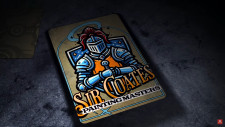




![TerrainFest 2024! Build Terrain With OnTableTop & Win A £300 Prize [Extended!]](https://images.beastsofwar.com/2024/10/TerrainFEST-2024-Social-Media-Post-Square-225-127.jpg)





